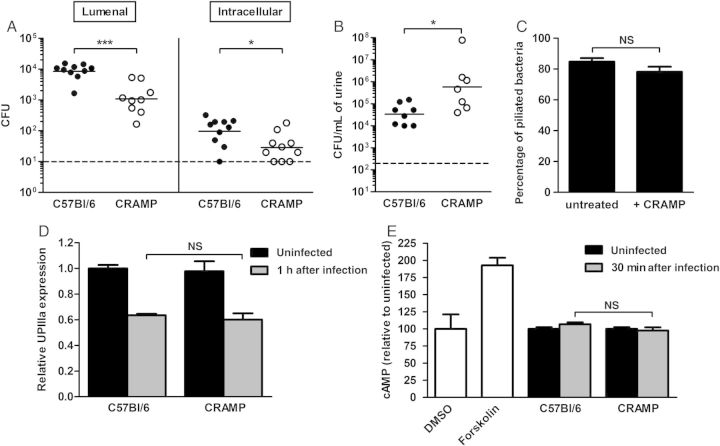Figure 3.
A, Bacterial titers in the lumenal and intracellular (gentamicin-protected) compartments at 1 hour after infection were both significantly lower in cathelin-related antimicrobial peptide (CRAMP)–deficient mice (*P < .05 and ***P < .001; n = 5 mice/strain/experiment). B, CRAMP-deficient mice liberate increased numbers of bacteria in the urine 1 hour after infection (*P < .05). Dashed line represents the limit of detection, and bars represent the geometric mean in A and B. C, Proportion of bacteria, either untreated or after 1 hour of exposure to 10 µg/mL CRAMP, that were piliated, as determined by electron microscopy (n = 100/condition × 5 separate experiments). D, Densitometric quantification by immunoblot of uroplakin IIIa (UPIIIa) in bladder homogenates (uninfected and 1 hour after infection) as a measure of epithelial exfoliation showed no difference between host strains. Mitochondrial enzyme CoxIV was used to normalize the mount of protein in each sample. E, No significant difference in bladder epithelial cAMP expression 30 minutes after infection was found between wild-type and CRAMP-deficient mice (n = 6–7 mice/strain). Negative and positive controls, respectively (white bars), included vehicle-only (dimethyl sulfoxide [DMSO]) and forskolin-treated C57Bl/6 bladders (n = 2 mice/treatment). Mean and standard errors of the mean are indicated in panels C–E. Abbreviations: CFU, colony-forming units; NS, not significant.

